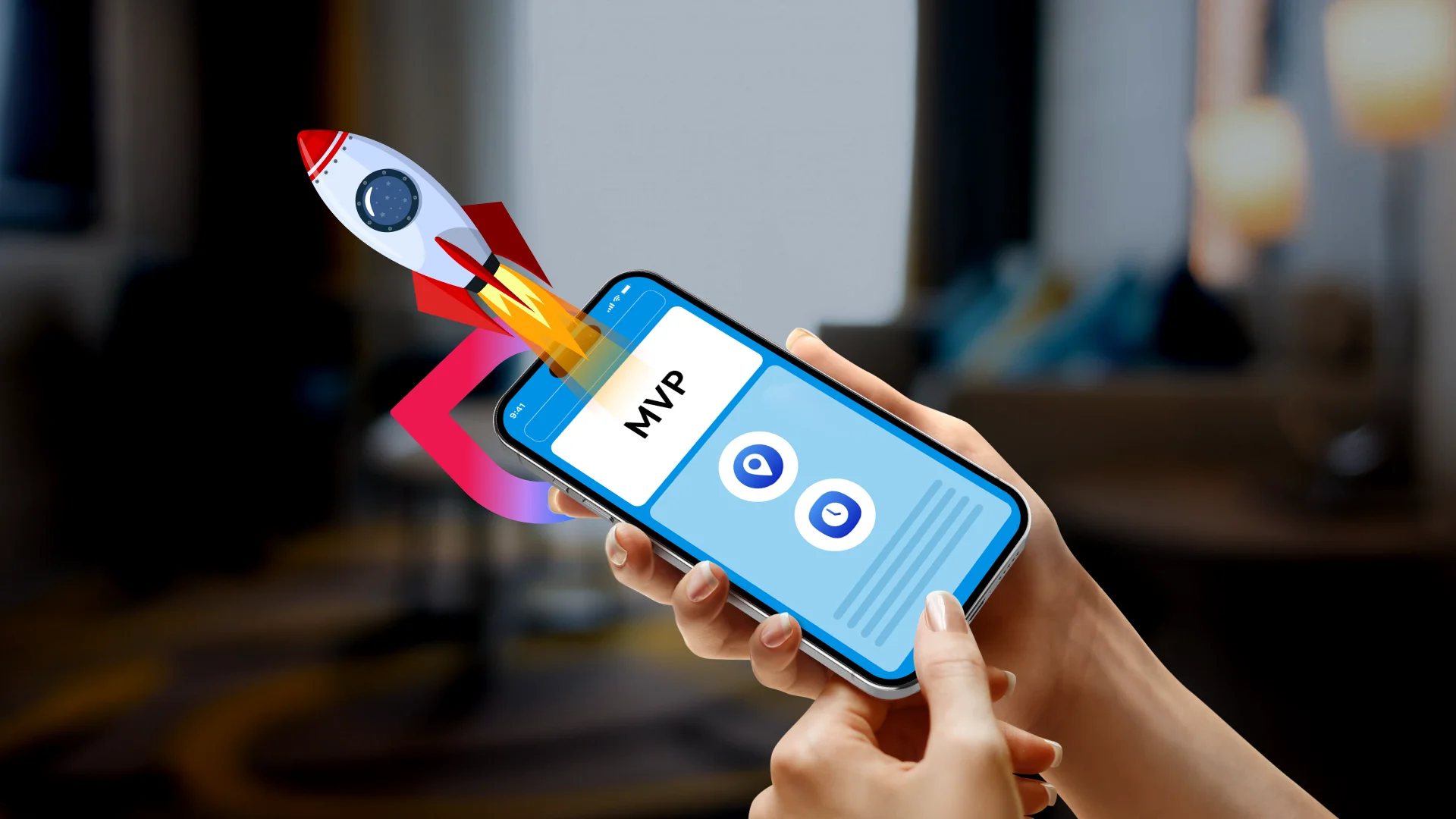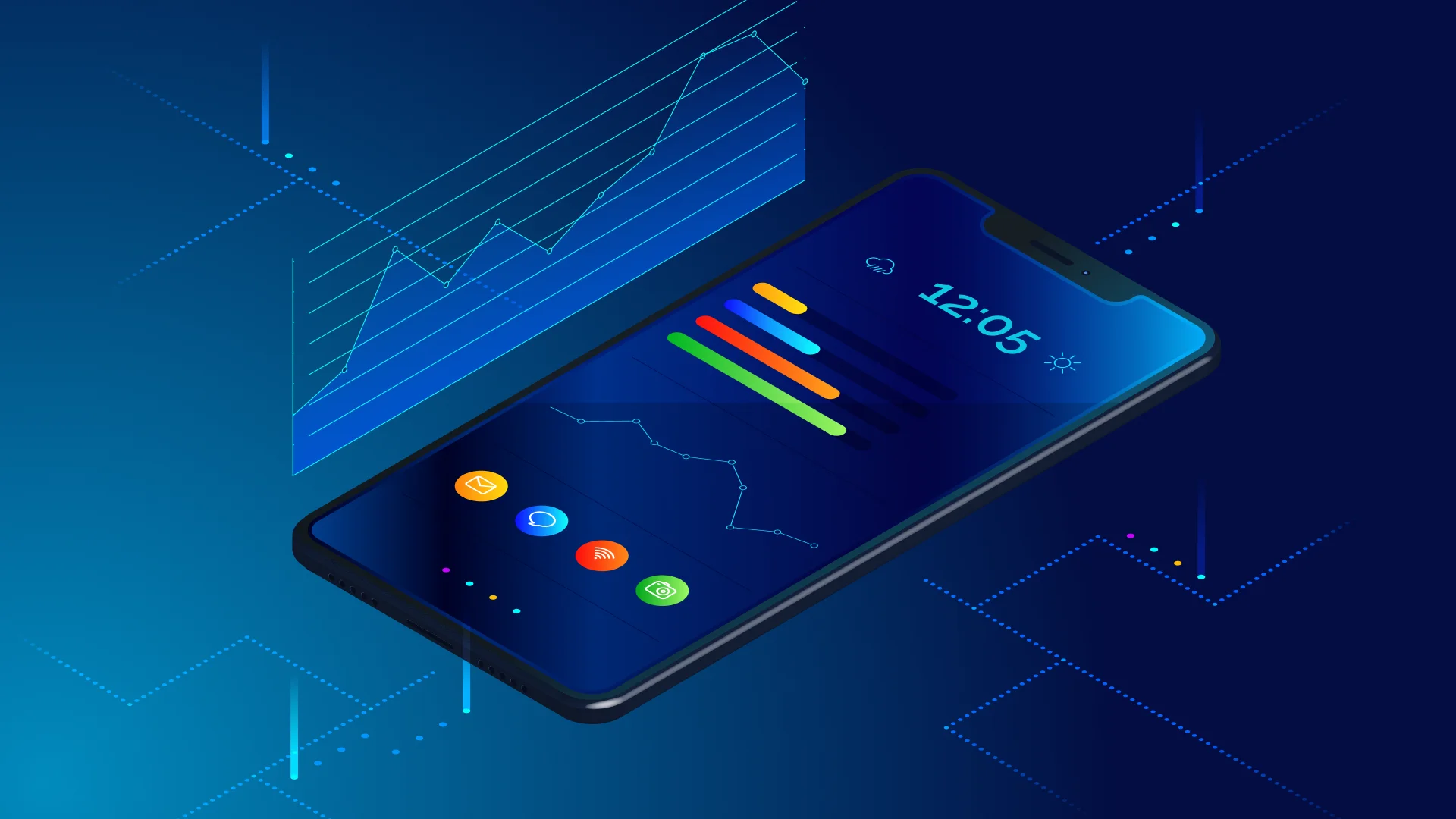A Founder’s Guide to MVP Development: From Idea to Validation
- Mobile
- July 29, 2024
Did you know 90% of startups fail? Often, this stems from building products without validating market demand, misaligned features, or scaling too quickly. An MVP (Minimum Viable Product) is your antidote. By focusing on core user needs and iterative learning, it reduces risk and accelerates growth.
This guide breaks down how to build an MVP—from defining your vision to launching strategically. Let’s turn your idea into a validated product.
What is an MVP?
An MVP is the simplest version of your product that solves a core problem for users. It’s not a half-baked idea but a strategic tool to test assumptions, gather feedback, and iterate before full-scale development.
Think of it as a learning engine:
- Minimal: Includes only essential features.
- Viable: Delivers real value to users.
- Iterative: Evolves based on data-driven insights.
For example, Dropbox started with a video demo explaining its file-syncing concept. This “MVP” validated demand before a single line of code was written.
Why Build an MVP?
Startups fail for many reasons:
- 42% build something nobody wants (CB Insights).
- 35% run out of cash due to overspending.
- 17% ignore user feedback.
An MVP addresses these risks by:
- Validating Demand: Test if users care about your solution.
- Saving Resources: Avoid costly, unnecessary features.
- Attracting Stakeholders: Prove traction to investors or partners.
- Accelerating Learning: Fail fast, learn faster.
How to Build an MVP: A Step-by-Step Process
1. Identifying the Core Problem
Define the primary issue your product solves. The first step in building an MVP is to identify the core problem your product aims to solve. Ask yourself:
- What specific issue does your product address?
- Why is this problem significant for your target audience?
- How does your solution create value?
Understanding the core problem lays the foundation for your product’s success. If the problem isn’t urgent or relevant, even a polished product will struggle. Validate its importance through user interviews, surveys, or market data.
2. Conduct Market Research
Analyze competitors, users, and trends. After defining the problem, validate its market fit by researching:
- Target Users: Demographics (age, income), psychographics (values, lifestyle), and behavioral patterns (usage habits).
- Competitors: Study their strengths, weaknesses, and gaps in their offerings.
- Market Trends: Localization needs, pricing expectations, and adoption barriers.
For example, if building a task management tool, analyze apps like Asana or Trello to identify underserved user needs.
3. Prioritize Features
Focus on “must-have” functionalities. List potential features and categorize them using frameworks like MoSCoW:
- Must-Have: Core features critical to solving the problem (e.g., task creation in a productivity app).
- Should-Have: Important but non-essential features (e.g., file attachments).
- Could-Have: “Nice-to-have” extras (e.g., dark mode).
- Won’t-Have: Postpone for future versions.
This ensures your MVP stays lean and focused.
4. Build a Prototype
Visualize the user experience. Before coding, create wireframes or interactive prototypes (using tools like Figma) to:
- Map user journeys (e.g., signing up, completing a purchase).
- Test usability and gather internal feedback.
- Identify design flaws early.
Prototypes act as a blueprint, aligning stakeholders and saving development time.
5. Develop the MVP
Build a functional, minimal version. With priorities set, start development:
- Tech Stack: Choose scalable tools (e.g., React for frontend, Firebase for backend).
- Agile Methodology: Work in sprints to iterate quickly.
- Quality Assurance: Test for bugs, performance, and security.
For example, Airbnb’s MVP focused solely on booking air mattresses with breakfast—no complex features.
6. Launch the App Beta Version to Test User Perception
Test with a small, targeted audience. Release the MVP to early adopters (e.g., beta testers, loyal customers) to:
- Track engagement metrics (daily active users, session duration).
- Collect qualitative feedback on usability and pain points.
- Identify technical issues before a full launch.
Tools like Hotjar or Mixpanel can help analyze user behavior.
7. Analyze Feedback, Iterate, and Launch the Final MVP Version
Refine based on data. Use beta feedback to:
- Fix bugs and simplify workflows.
- Prioritize high-impact features for the next iteration.
- Validate monetization strategies (e.g., subscription models).
Once refined, launch the MVP to a broader audience, backed by data-driven confidence.
Common MVP Mistakes to Avoid
- Building Too Much: Extra features delay learning. Stick to the essentials.
- Ignoring User Feedback: Beta users are your compass—listen to them.
- Skipping Monetization Tests: Even a simple pricing page can validate willingness to pay.
- Targeting Everyone: Focus on a niche audience first (e.g., “freelancers” vs. “all professionals”).
MVP Success Stories
- Spotify: Launched as a desktop app with basic music streaming to combat piracy.
- Zappos: Started by posting shoe photos online to test if people would buy without a physical store.
- Facebook: Began as “The Facebook” for Harvard students before expanding globally.
Each started small, validated demand, and scaled strategically.
How to Measure MVP Success
- Quantitative Metrics:
- Activation Rate
- Daily Active Users (DAU)
- Churn Rate
- Qualitative Insights:
- User interviews (“What’s your biggest frustration?”)
- Feedback forms (“What feature would you pay for?”)
Why Partner with MindInventory?
Building an MVP requires technical expertise, user-centric design, and agile execution. MindInventory offers:
- End-to-End Development: From ideation to launch.
- Data-Driven Insights: Metrics that guide iterations.
- Scalable Solutions: Prepare your product for growth.
FAQs on MVP Development
What is the difference between a prototype and MVP?
A prototype is an early model of a product used to visualize and test design concepts, typically not functional. An MVP (Minimum Viable Product), on the other hand, is a functional version of the product with just enough features to satisfy early users and gather feedback for future development.
In which stage is a minimum viable product (MVP) created?
An MVP is created in the early stages of product development to test the core functionalities with minimum resources and gather user feedback just after product discovery and prototyping.
How to develop a minimum viable product?
The MVP product development process is carried out by including processes like defining the primary issue your product will address, understanding the target audience and their needs, determining the core app features and functionalities, building the MVP, and releasing it to gather user feedback and iterate it accordingly while staying relevant to the industry and market standards.
How much does it cost to build an mvp?
MVP development offers many benefits to businesses planning to quickly enter the market and start building their user base. All those benefits can only be leveraged if the process is strategically planned and executed.
To do so, you’ll need help from experienced professionals offering MVP development services to guide you through the process, from market research and prototyping to final launch and ongoing support.
When searching for such an alliance, MindInventory can be the one for you. We have years of experience in MVP development, helping global clients turn their innovative ideas into successful, user-centric products. Contact us today to discuss your project requirements and craft a solution tailored to the problem you aim to solve.
How long does it take to develop a minimum viable app?
On average, you can expect to build your MVP within 6-12 weeks, but yes, if the complexity of the concept is higher, it may take more than that.













